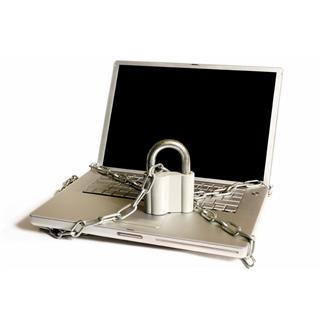With gang activity, drug addicts and the economic situation, fear of crime is ever-present. Personal safety is an important issue for everyone, but especially for women. Here are ten things you need to know about personal safety:
1. Awareness – The first, and probably most important component in personal safety is awareness: awareness of yourself, your surroundings and your potential attacker’s likely strategies. Criminals use the element of surprise and they key in on people who are unaware of what’s going on around them – talking on the phone, texting, sight seeing, etc. all take your focus off of who and what is around you.
2. Use your “sixth sense” – “Gut instinct,” “Intuition” or whatever you call it is a powerful subconscious insight we feel about situations and people. We all have this gift, especially women, but very few of us pay attention or follow it. Trust it and learn to use it to your full advantage. Avoid any person or situation, which does not “feel” safe – you’re “sixth sense” is probably right.
 3. Self-defense training – Most people think of kicks to the groin and blocking punches when they hear the term “self-defense.” It’s important to evaluate your goals and the practical usefulness of a women’s self-defense program before signing up. If you are thinking of taking such training, consider these two tips:
3. Self-defense training – Most people think of kicks to the groin and blocking punches when they hear the term “self-defense.” It’s important to evaluate your goals and the practical usefulness of a women’s self-defense program before signing up. If you are thinking of taking such training, consider these two tips:
a) Be careful of martial arts studios. Many women’s self-defense programs teach watered-down martial arts techniques that are complex and unrealistic under the stress of an actual attack.
b) Be sure the program you take includes simulated assaults in realistic rape and attack scenarios, which will allow you to practice what you’ve learned.
4. Escape – This is always the best option. What do you do if a predator suddenly confronts you – be it in a car, in an alley, or a building and demands you go with him? It would seem wise to obey, but never leave with them! Your chance of surviving a rape, murder or serious injury is far less likely if you go with the predator, even if he promises not to hurt you. Your best option is to run away, yell for help, throw a rock through a store or car window – do whatever you can to attract attention. If the criminal is after your purse or other material items, throw them one way while you run the other.
5. Fight back – Unfortunately, no matter how diligent we are in practicing awareness and avoidance techniques, we may find ourselves in a situation that leads to a physical confrontation. It doesn’t matter if you have self-defense training, what your age or physical condition is, understand you CAN and SHOULD physically defend yourself. Many women worry that they will anger the attacker and make things worse if they defend themselves. However, statistics clearly show the odds of survival are far greater if you do fight back. So, aim for the eyes first and the groin second, and use the element of surprise to your advantage – strike quickly, and mean it. You may only get one chance.
6. Pepper spray – To use it or not. While pepper spray can be a useful tool, understand that there can be significant drawbacks to its use. Such as, it doesn’t work on everyone! Even a full-face spray will only incapacitate 80-85% of people. Also, carrying it in your purse wastes time and alerts the attacker to your intentions while you fumble for it. Never depend on any self-defense tool or weapon to stop an attacker, instead, trust your body and your wits.
 7. Home invasions – A horrifying crime that is on the rise. A key to preventing a home invasion is to never, ever open your door unless you are certain you know who’s on the other side or you can verify that they have a legitimate reason for being there. Don’t fall for someone posing as a repairperson, a police officer, or a child selling something; these are tricks used by criminals to get your defenses down. Another key is to have solid core doors made of wood, steal or fiberglass, deadbolt locks with at least a 1” throw and reinforced strike plates.
7. Home invasions – A horrifying crime that is on the rise. A key to preventing a home invasion is to never, ever open your door unless you are certain you know who’s on the other side or you can verify that they have a legitimate reason for being there. Don’t fall for someone posing as a repairperson, a police officer, or a child selling something; these are tricks used by criminals to get your defenses down. Another key is to have solid core doors made of wood, steal or fiberglass, deadbolt locks with at least a 1” throw and reinforced strike plates.
8. Avoiding a car jacking – Lock all doors and keep windows up when driving. Car jacking takes place most often when vehicles are stopped at intersections. The criminals approach at a 45-degree angle, in the blind spot, and either pull you out of the driver’s seat or jump in the passenger’s seat.
9. A travel tip – Violent crimes against women happen in the best and worst hotels around the world. Predators may play the part of a hotel employee; pushing their way through an open or unlocked door, or obtain a passkey to the room. As with home  safety, never open your door unless you are certain the person on the other side is legitimate. Use a door wedge, it is often stronger than the door it secures.
safety, never open your door unless you are certain the person on the other side is legitimate. Use a door wedge, it is often stronger than the door it secures.
10. Safety in cyberspace – Although the Internet is educational and entertaining, it can also be full of danger if you aren’t careful. When communicating on-line, use a nickname and always keep personal information such as home address, phone number and complete date of birth confidential. Don’t post your plans or use the ‘check-in’ features – don’t give the criminals any tips or advantages!
Personal Safety for women is about awareness, attitude, and understanding the dangers. Knowing how a potential threat may develop and understanding how to avoid them and the safest and best course of action is the key to staying safe out there.
Author David Murphy is the CEO of Xpress Protection Security Solutions, Inc. As SmartFem’s featured expert on home security he is eager to educate readers and help them stay safe.



















David,
Your article on personal safety was outstanding! I personally studied full contact Martial Arts for years and we have similar beliefs and ideas.
We were taught the different levels of awareness and it’s amazing how many people go about their day to day business without paying attention to their surroundings. Most threats can be eliminated just by acting accordingly to the environment around them.
Statistics also show if an abductor has the ability to take you away from your present location the more likely you will be harmed. I can continue but would like to keep this short.
The last comment I will make besides this being a great article, would be if you had to fight to protect yourself go for the eyes or throat. An attacker can’t fight you if he can’t see or breath!
Best,
Alan Zieder
Alan,
I really appreciate your comments and sharing your perspective!
Awareness of our surroundings is critical to being safe and avoiding potentially dangerous situations. If it comes to fighting and defending ourself, do it…and definitely go for the throat and eyes!
Have a safe and successful day!
David